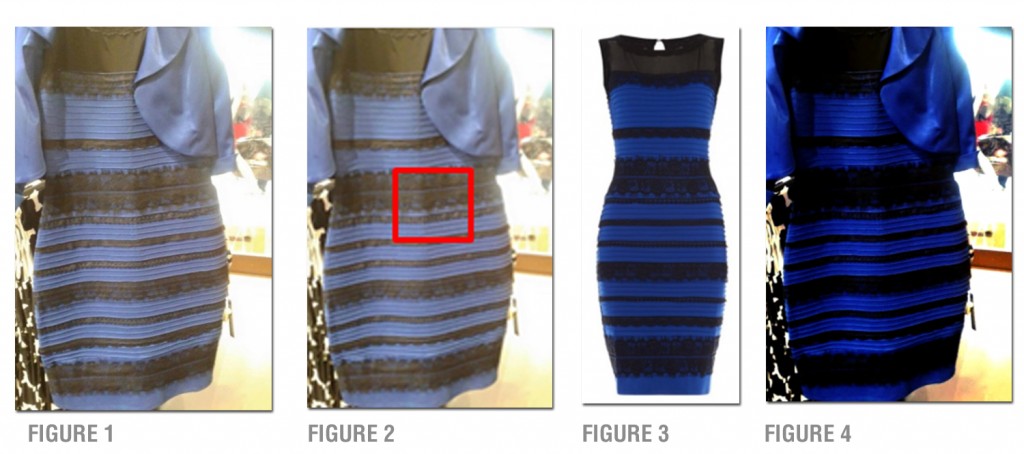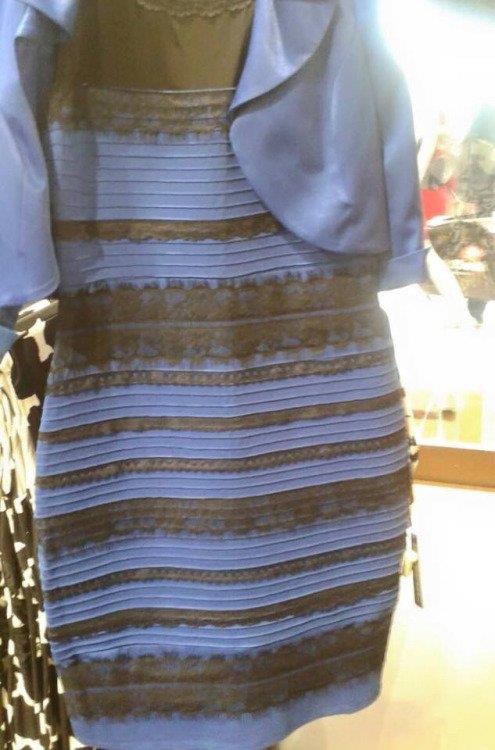In February 2015, a photo of a dress captivated the world of social media (see Figure 1). The controversy behind the dress: What colour is it? Millions of people across the internet chimed in to express their opinion, polarizing people into two separate camps: White and Gold vs. Black and Blue.
In the end, the dress was confirmed to be black and blue (see Figure 3) but “The Dress” controversy certainly sparked an interesting debate and prompted news media to consult a range of experts to offer explanations as to why people could not agree on the colours of the dress.
Experts say that everyone perceives colour differently, and studies have shown that we interpret images differently when we view them on a TV or computer monitor compared to how we see them in print form. However, if we set aside the explanations relating to the anatomy of the human eye, and instead examine the “anatomy” of a digital camera, we can easily demonstrate how this controversy came to be.
Whether the photo of “The Dress” was taken with a cell phone, point-and-shoot, or digital SLR camera (in full auto mode), does not make a difference. A simplified explanation of the process used on most digital cameras would be the same: 1) Turn on the camera, 2) Aim the camera towards the subject, 3) Press the shutter button, 4) The camera examines the information in the center of the scene and adjusts the lens focus, assesses the light level, selects the exposure, and adjusts the color balance based on the scene content, and 5) The picture is snapped and stored.
When using a digital camera, pictures are captured using an array of Red, Green, and Blue pixels. The camera’s technology then has the ability to manipulate these three channels depending on the light source. This operation is called ‘White Balance’ and is based on the camera settings or upon the content of the scene, to reproduce colors accurately.
When the photo of “The Dress” was taken, the camera view was centered on a dark band of the dress (see the red rectangle in Figure 2). The camera used the information detected in this area to determine that a longer exposure time was required and since the dress was hanging in front of a bright window, the longer exposure time resulted in the image background being over-exposed, while the black areas of the dress were made much lighter than they actually appeared. The black stripes became boosted to a dark shade (somewhat gold) and no longer looked black.
The camera then attempted to determine the appropriate color scheme, i.e. White Balance. A typical automatic White Balance algorithm examines the data from the image to choose a setting, but the predominant decision is based on the brightest values detected in each of the camera sensor’s Red, Green, and Blue channels. In the center of this scene, the camera received a strong response from only the Blue channel as there is no Red or Green to offer feedback to the camera sensor. In response to what the camera detected, it increased the Red & Green channel signals to attempt to balance the scene to what the program considered a ‘real-world’ image.
If the camera used the information in the red rectangle from Figure 2 to make a decision on color balance in this image, it only had access to Black and Blue feedback so it tried to adjust the camera settings resulting in the blue appearing as white.
The image in Figure 3 shows how the dress looks in real life – or at least how it appears in a photo taken under studio lighting, using a camera that was correctly color balanced. Now we can see how the camera that was used to take the controversial photo misinterpreted the information available and used the automatic correction algorithms to achieve a result that did not represent reality.

So, if we return to Figure 2 and apply some post-processing to reduce the overall brightness of the image, we can see the darker stripes return to black. The final post-processing result (Figure 4) shows how a color balance adjustment removes the amplification applied by the camera to the Red and Green channels of the image, restoring the light-coloured stripes to Blue.
The image background remains over-exposed, but now the image of the dress matches the original. Nobody would think that this photo showed a dress that was white and gold.
It is important to control the camera’s response to the available light source so that the color sensor applies only the required amount of compensation to produce a correctly balanced result. Whether shooting pictures under Halogen lamps, fluorescent bulbs, in direct sunlight, or under a cloudy sky… it is imperative to use the camera’s tools to establish a correct White Balance for the color temperature of the light, otherwise all the colors within the image will be biased and subject to misinterpretation by the viewer.


